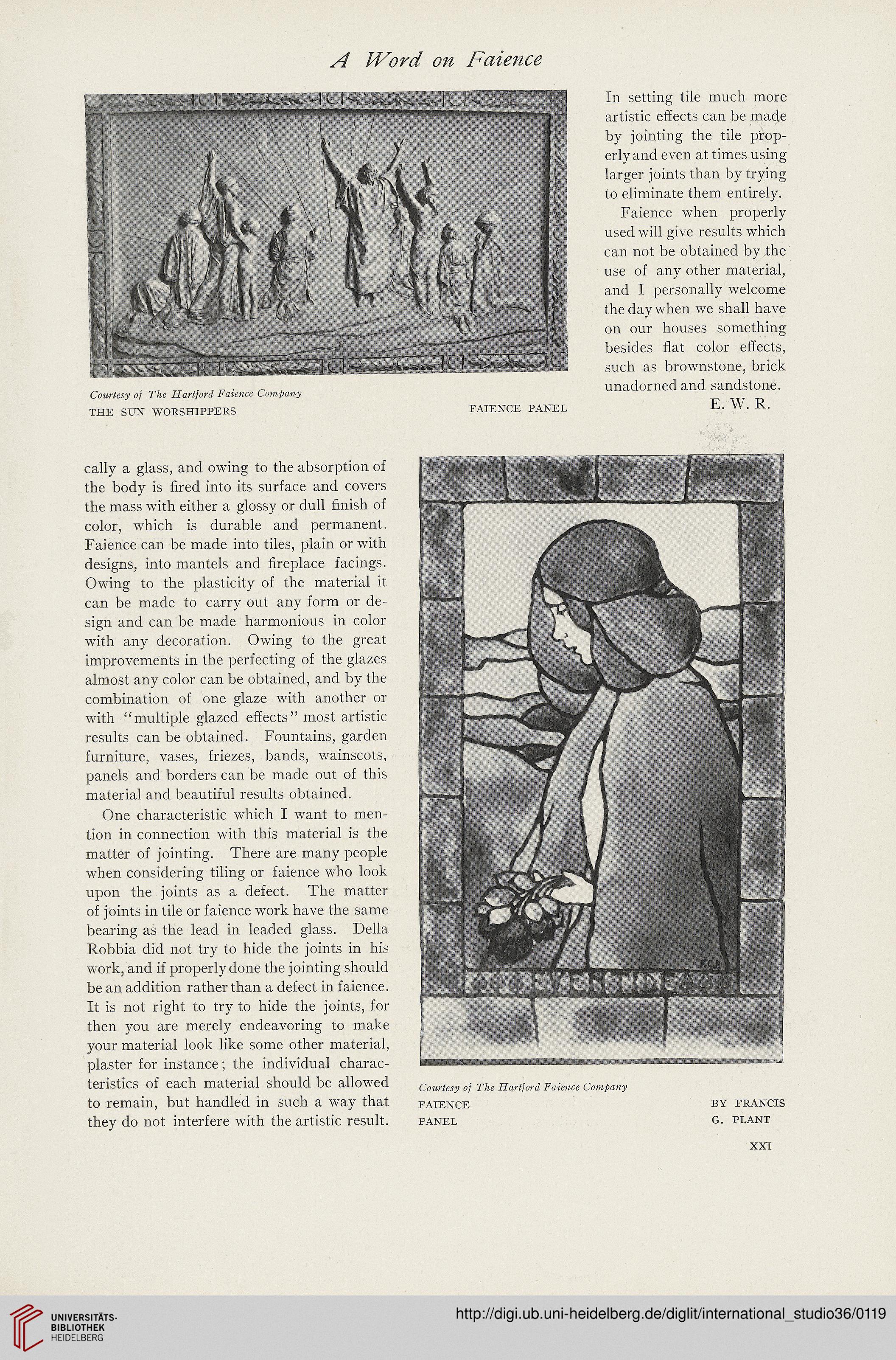o/ R*o?-//o?'J Fa^MCg Cow.^awy
THE SUN WORSHIPPERS FAIENCE PANEL
In setting tiie much more
a,rtistic effects can be made
by jointing the tile prop-
erly and even at times using
iarger joints than by trying
to eliminate them entirely.
Faience when properly
used wiil give results which
can not be obtained by the
use of any other material,
and I personally welcome
thedaywhen we shall have
on our houses something
besides dat coior effects,
such as brownstone, brick
unadorned and sandstone.
E. W. R.
cally a gfass, and owing to the absorption of
the body is hred into its surface and covers
the mass with either a glossy or dull hnish of
color, which is durable and permanent.
Faience can be made into tiles, plain or with
designs, into mantels and hreplace facings.
Owing to the plasticity of the material it
can be made to carry out any form or de-
sign and can be made harmonious in color
with any decoration. Owing to the great
improvements in the perfecting of the glazes
almost any color can be obtained, and by the
combination of one glaze with another or
with "multiple glazed effects" most artistic
results can be obtained. Fountains, garden
furniture, vases, friezes, bands, wainscots,
panels and borders can be made out of this
material and beautiful results obtained.
One characteristic which I want to men-
tion in connection with this material is the
matter of jointing. There are many people
when considering tiling or faience who look
upon the joints as a defect. The matter
of joints in tile or faience work have the same
bearing as the lead in leaded glass. Della
Robbia did not try to hide the joints in his
work, and if properly done the jointing should
be an addition ratherthan a defect in faience.
It is not right to try to hide the joints, for
then you are merely endeavoring to make
your material look like some other material,
plaster for instance; the individual charac-
teristics of each material should be allowed rA. c.,„^„y
to remain, but handled in such a way that FAiENCE
they do not interfere with the artistic result. PANEL
BY FRANCIS
G. PLANT
XXI




